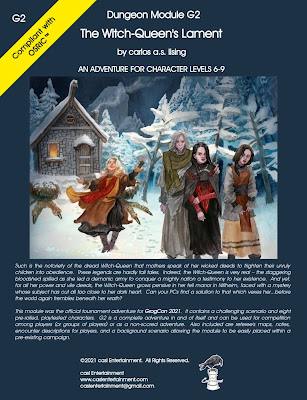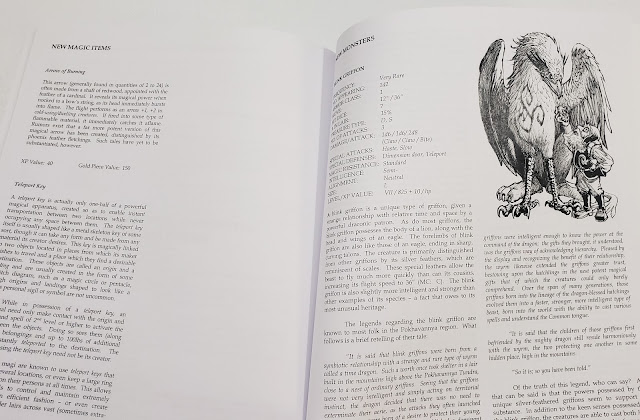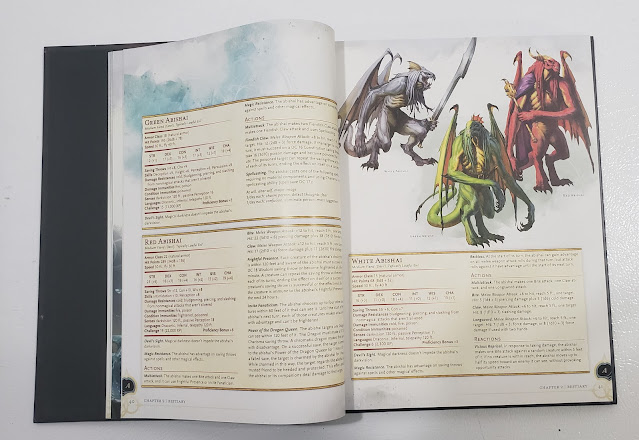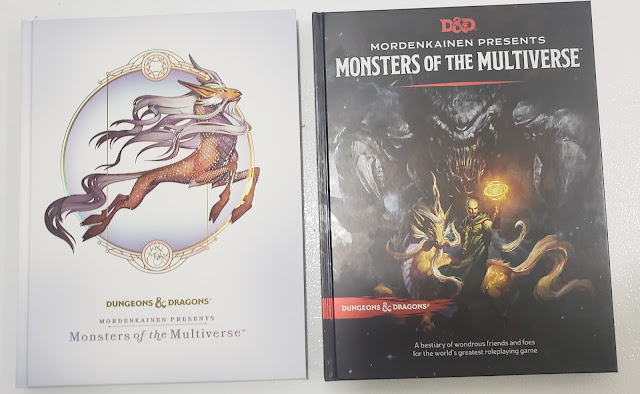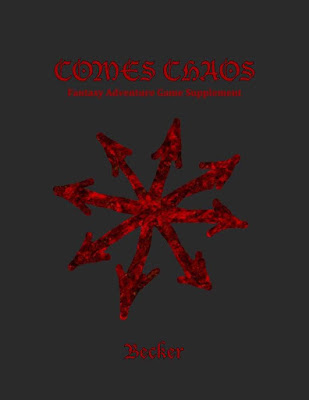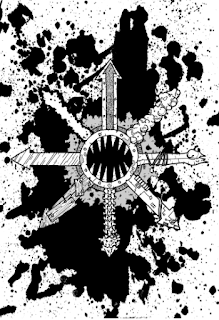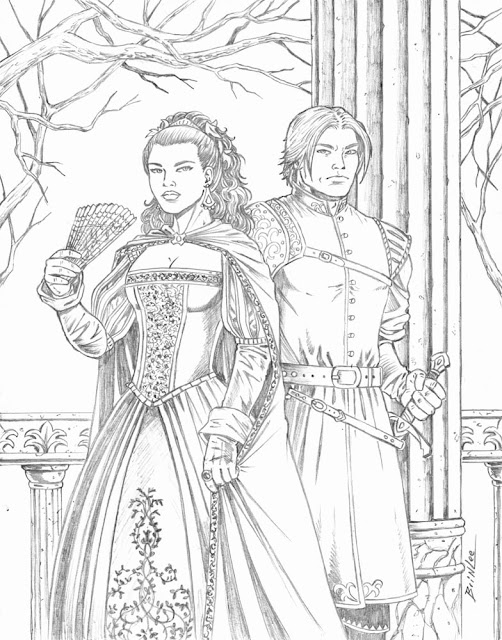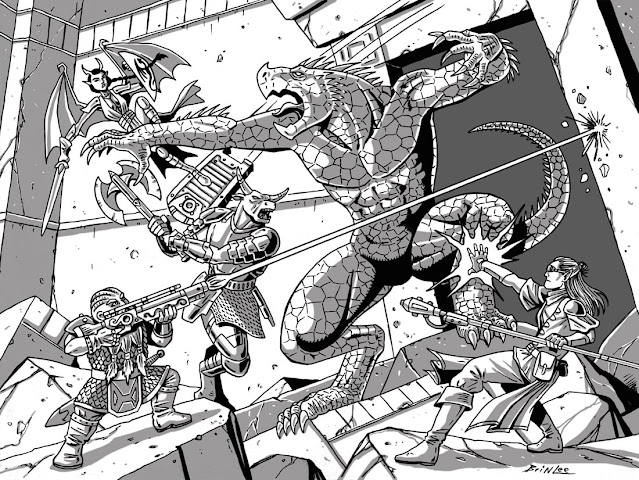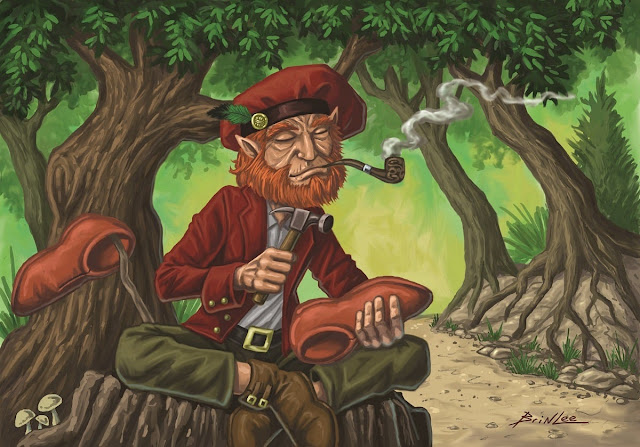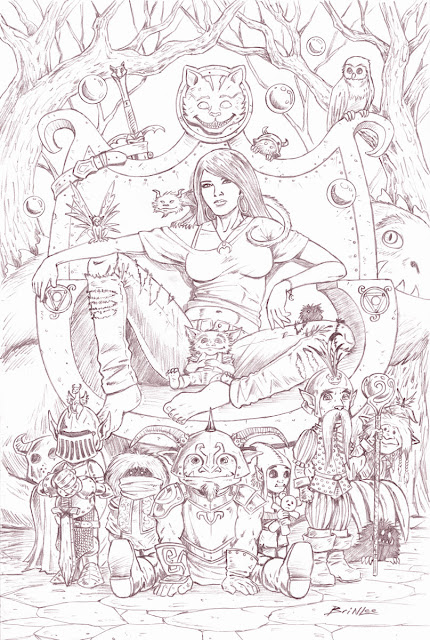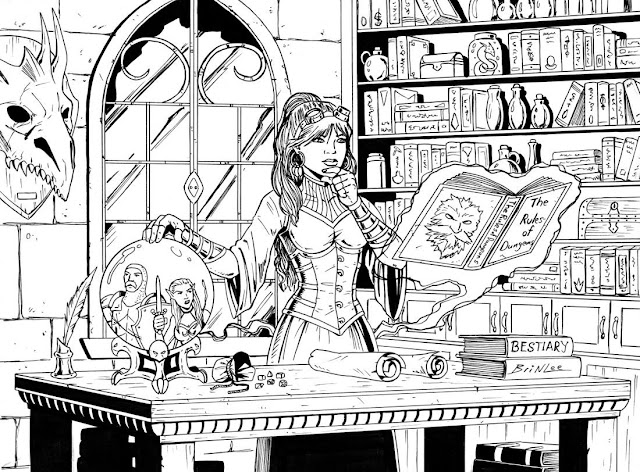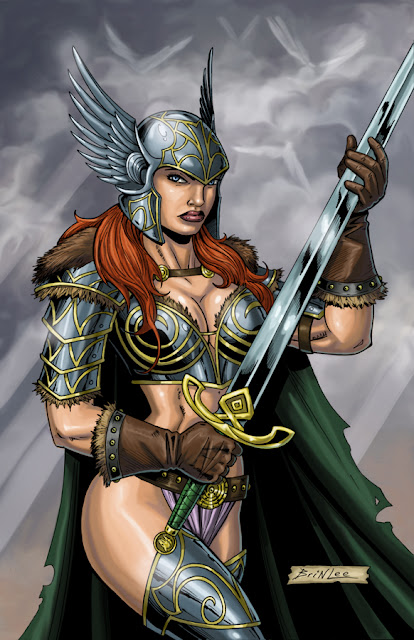An adventure for character levels 6-9 (70,002 total experience points) for OSRIC or compatible games. PDF and softcover available, 95 pages.
This adventure is "compliant" (I think "compatible" is the word they want, it is "compliant" with the OGL) with OSRIC. This really means it can (read should) be used with AD&D 1st Edition. It will work with other games too, but more on that.
This adventure is designed for Tournament play. That is why we have the 70,002 XP value on it and there is a tournament scoring sheet. IF you wish to play this adventure with tournament rules and scoring my advice is do not change anything about it. I have run a few tournament adventures with scoring and this one feels like it put together well. My concern would only be can you fit it into the four-hour time slot? I am 100% certain that author Carlos A.S. Lising has and has done so many times. I am not sure *I* could do it. That all being said I want to look at this from the point of view of a campaign, and my War of the Witch Queens campaign in particular.
So let's start back at the beginning. This adventure was the official Tourneyment adventure for GrogCon 2021. Looking over their catalog it looks like they have run a few adventures at other old-school cons as well. This bodes well. The adventure was written by Carlos A.S. Lising, with cover and interior art by Daniel Govar, and cartography from Glynn Seal. Carlos A.S. Lising is a huge fan of module S4 The Lost Caverns of Tsojcanth which is also one of my favorites. This makes me optimistic for this adventure.
Now when this was announced for sale there was a little bit of wailing from the usual suspects in regard to the module code, G2, on the cover. With many complaining that this was not really G2. Sorry but the TSR G2 The Glacial Rift of the Frost Giant Jarl is over 40 years old now and neither TSR nor Gygax owned the letter G. I am sure the G, in this case, stood for "GrogCon." If this bugs you, be like Elsa and let it go.
On to the adventure proper. We learn right away that the eponymous Witch-Queen is none other than "Natasha the Dark" aka Tasha, aka Tashanna, aka Zyblina, aka Iggwilv herself! Ok. You now have my undivided attention. We get a bit of backstory on Natasha the Dark including her becoming a Daughter of Baba Yaga, and her sisters Vasilisa (Elena) the Fair and Anya the Plain. Anya is going to be our focus here since she has gone missing with Natasha's matryoshka doll. This was no ordinary doll, this nesting doll held a bit of Natasha's soul/life force and has kept her immortal for centuries. Natasha, it a bit uncharacteristic token of love, gave the newly enchanted doll to Anya for safe-keeping, knowing her sister would love it and cherish it. The side effect has been that as long as Anya has the doll she will also be immortal, just stuck in the form of a 12-year-old girl.
The doll, and Anya, has now been stolen and IggwilvNatasha needs you all to get it back.
As far as adventure hooks goes this one is a good one. The doll is in the hands of an evil Wizard named Andrei Anazinov who knows it is special and knows Anya has never aged. He trying to discover its secrets. So get the doll before the wizard figures out Natasha's immortality. The adventure overtly makes it about saving Natasha's immortality, but as you read it the real reason is also uncovered, the ancient Witch Queen still loves her little sister. Undoing the immortality would be bad for Natasha, but it is also likely she has many safeguards in place. It would however kill Anya outright.
I don't want to go too much deeper than this in case potential players read this. It is a MacGuffin search, but a fun one and a chance to interact with one of the more notorious characters in D&D lore.
Comments on the Adventure
A few comments. I can completely understand why Natasha wants the doll and Anya back. I even understand why she wants good adventurers to do it. I am not sure why someone of Natasha's caliber would a. let the adventurers know who she is and b. what the doll is. It seems to me that good or evil the party might want to hide or destroy the doll to stop an evil witch queen. When I run this I am going to need another reason.
The maps are great. I am glad I have to PDF to print them out on my own.
There are some cool new monsters (a must in any adventure) and magic items. There is even a pronunciation guide.
One nitpick. None of the pages have page numbers on them. Seems a touch odd, but I can deal.
Sixteen pages are given over to the 8 pre-gen characters. So that is nice. There are also tournament scoring sheets.
Adapting for War of the Witch Queens
I bought this adventure with idea of adapting it over to my War of the Witch Queen campaign. This is not the first "Witch Queen" adventure I have bought, nor will it be my last I am sure. The fact that it includes Natasha/Iggwilv just makes it more perfect to be honest.
So here are my changes.
I am not running this as a tournament since I am going to be using OSE-Advanced Fantasy for it. There will be some more tweaks for the rules, but I think it is going to work out just fantastic really.
Natasha/Iggwilv is not going to let the adventurers know who she is or why she wants the doll back. I am going to have her disguise herself as Elena the Fair and "Elena" will be hiring them to rescue her sister Anya. This way she feels she is not lying about her mission. In the end, Anya will out "Elena" as Iggwilv, but the terms of their agreement will remain. Maybe Vasilisa the Beautiful will show up to take Anya. I have Elena and Vasilisa as two separate characters.
I love the whole Russian feel to all of this, but I am going to take out Andrei Anazinov and replace him with Kelek. Kelek has had some dealings with Iggwilv already and he is the "big bad" of the War of the Witch Queens. I need an adventure to get him in front of the PCs instead of making him a behind the shadows guy. Andrei is a 14th level wizard. I made Kelek a 15th level magic-user/necromancer. Also in my games Kelek is looking for ways to make himself ever young, he thinks Anya (not the doll) is the answer. Kelek is a misanthrope, so kidnapping and experimenting on a little kid is kinda on-brand for him So this all fits.
Plus I have these great minis to use.
There might be other little tweaks along the way. More winter wolves and worgs to be sure. I am certainly going to steal ideas from the newer 5e versions of Iggwilv and Kelek and I am also going to steal ideas from the Pathfinder Witch War series.
There are more adventures on the casl Entertainment website. Including one, C11 - When Comes the Witching Hour, that looks like it could be Iggwilv on the cover. So I am going to need to check that one out as well. Just watched this video and yup, looks like it is! I have to go get it now.

